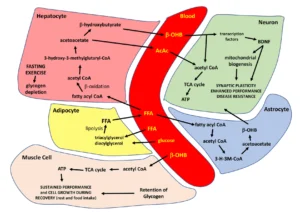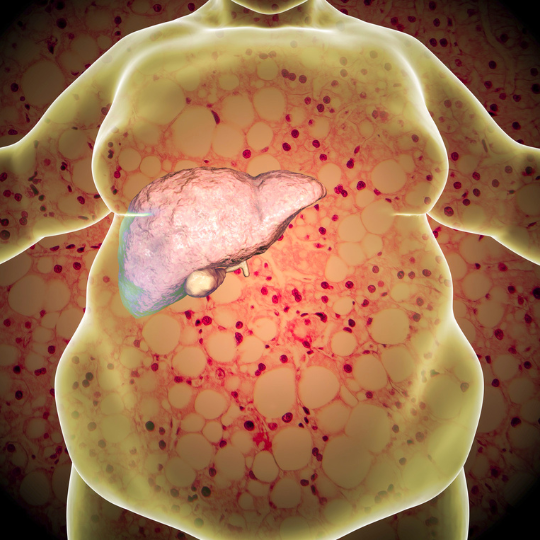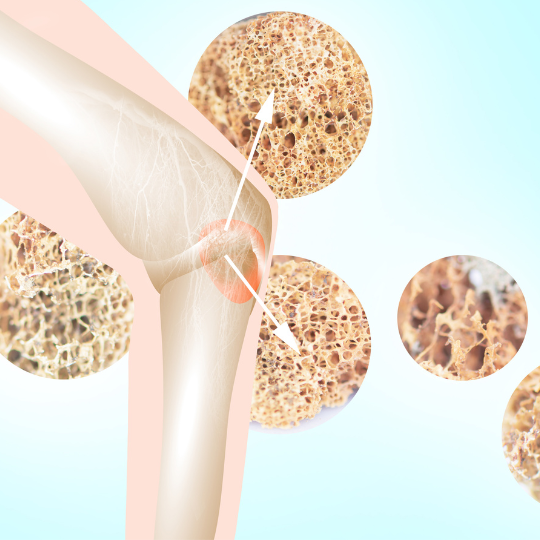Fasting is an ancient practice that has been used for religious, cultural, and health reasons for centuries. It is part of a balanced approach to nutrition where feeding and growth need to be alternated with fasting and autophagy (cellular clean-up).
Geek side note: Biochemically speaking, by flipping the metabolic switch in fasting, the body preferentially shifts from glucose utilization from glycogenolysis to utilizing fatty acids and fatty acid-derived ketones. This usually occurs between 12 to 36 hours after cessation of food consumption depending on the liver glycogen content at the beginning of the fast, and on the amount of the individual’s energy expenditure during the fast. The metabolic flexibility provided by regular fasting enables individuals to store energy in the form of lipids in fat depots when food is available, and then perform at a high level during extended periods when food is not available, thus ensuring a survival advantage to individuals most metabolically flexible. Through the release of epinephrine/adrenaline, a boost in overall energy and focus usually accompanies fasting states.

Fasting works clinically, as it’s easier to implement across cultures than to restrict specific traditional foods, as for example rice consumption in south-east Asia. For it to be more effective though, a fasting community is an ideal environment, whether online or even better in person (as in the members of the same household). Otherwise there are roadblocks in implementing any fasting protocol, so adherence is low: imagine for example having to fast when everybody else around you is repeatedly eating; you can swing it a few times, but over the long run, it takes a lot of mental effort to succeed.
Enter Insulin
In a nutshell the major physiological effect of fasting is that it lowers insulin, which nowadays tends to create a myriad of problems at the consistently increased levels existent in the population. Not to vilify it too much, but elevated insulin may be the root cause of many of the modern diseases. Because it triggers de novo lipogenesis, after assembling glycogen from extra carbs taken up by the liver, insulin essentially builds triglycerides which it:
- either stores internally, thus causing fatty liver, which blunts the proper functioning of the liver & can also cause fatty pancreas, as a repercussion, which leads to failure of beta cells & consequently diabetes
- or it exports, leading to increased risks of obesity and of cardiovascular disease, via increased atherogenic risk and increased blood pressure, due to insulin’s positive effect on sodium reabsorption.
What’s more, being an anabolic factor, excess insulin can also increase cancer risk.

Fasting types
There are various fasting regimens that people follow, including the 16-8, 20-4 or Warrior Diet, OMAD (one meal a day), and alternate day fasting:
- 16-8: involves restricting food intake to a specific window of time each day, usually 8 hours. For example, an individual might eat only between the hours of 12pm and 8pm, and then fast for the remaining 16 hours. This type of fasting is also known as “time-restricted feeding”
- 20-4 or Warrior Diet: involves eating within 4 hours and then fasting for the remaining 20 hours of the day. This type of fasting is based on the idea that the body is better able to handle digestion if given an exclusive 4 hour window dedicated to feeding and relaxing

- OMAD: stands for “one meal a day” and, as the name suggests, this type of fasting involves eating only one meal per day. This meal can be eaten at any time, but it should contain all the necessary nutrients for the day
- Alternate day fasting (ADF): involves alternating between days of eating normally and days of severe calorie restriction, usually around 500 calories. This type of fasting has been shown to have a range of health benefits, including weight loss, improved insulin sensitivity, and reduced inflammation.
These are just a few examples of popular fasting regimens, but in scientific literature one can also find a lot of studies on Caloric Restriction, involving a continuous reduction in caloric intake without malnutrition. However, as mentioned above, restricting specific foods is harder to implement in practice than limiting feeding time to a specific time window.
Metabolic Effects of Fasting
One of the main benefits of fasting is that it can help to improve metabolic health. In animal models, fasting has been shown to improve insulin sensitivity, lower blood pressure, and reduce the risk of developing chronic diseases such as obesity and diabetes. These benefits have also been observed in human studies, with research showing that fasting can lead to weight loss, improved blood sugar control, and a reduction in markers of inflammation. More specifically, fasting:
- reduces LDL cholesterol & triglycerides
- promotes thermogenesis by browning of white adipose tissue (WAT)
- reduces both glucose and insulin
- reduces amino acid and urea levels
- increases catecholamines, glucocorticoids, growth hormone & glucagon, while at the same decreasing thyroid hormones
- enhances mood, possibly via BDNF (brain derived neurotrophic factor) & β-endorphin-derived serotonin increases.

Fasting has also been linked to longevity. Studies in animals have shown that calorie restriction, which is a form of fasting, can increase lifespan. While it is not clear if the same is true in humans, some research suggests that fasting may be associated with a reduced risk of age-related diseases and a longer lifespan.
Genetics matter.. again
PRKAA1 is the gene encoding for AMPK, one of the 3 nutrient sensors of the body, except insulin and mTOR, another gene. When the output of cellular energy, represented by the ATP/AMP ratio, is low, the AMPK gene triggers the autophagy process that recycles misfolded proteins, thus ensuring the periodically needed cellular clean-up. Without this process taking place, cells get clogged with dysfunctional molecules and may become senescent, or even worse, tumorigenic. Needless to say, variations in the PRKAA1 gene, make fasting an even higher priority for an enhanced health & wellbeing. ULK1, ULK2, ATG13 and SIRT3 are just a few other genes involved in the autophagic process.
Nutrient sensors side note:
- insulin adjusts in hours
- mTOR adjusts in 18-30 hours
- AMPK adjusts in days to weeks

Final tips
- when it comes to breaking a fast, it is important to do so in a way that supports metabolic health. A good approach is to start by consuming fiber, followed by non-animal fat and protein, and only towards the end starchy and simple carbs. This will help to stabilize blood sugar levels and prevent overeating. Depending on the length of the fasting protocol, it may be wise to avoid foods rich in simple carbs, such as glucose or fructose, at least until enough fiber or probiotic servings will stabilize the gut microbiota. In extended fasts, our microbiome is also not fed and consequently they start eating through the mucin layer in the gut; and whereas this can be regenerative for the gut, it comes with enhanced absorption rates and potentially blood glucose spikes in case simple sugars are consumed to soon upon the end of the fasting protocol
- in order to fall asleep easier during longer fasts, you can take phosphatidylserine & GABA to calm down the sympathetic nervous system, which can keep you tuned on
- emotional control may be worsened during fasting protocols, because of reduced glucose. Regulating averse emotional states usually requires large amounts of glucose and as this becomes scarce during fasting, emotional distress may occur. Diabetic patients are extremely susceptible to develop depression or anxiety. So start in a good mood, build a safe fasting environment, and expect some emotional challenge, depending on your baseline glucose tolerance.
Overwhelmed? Give us a shout!












